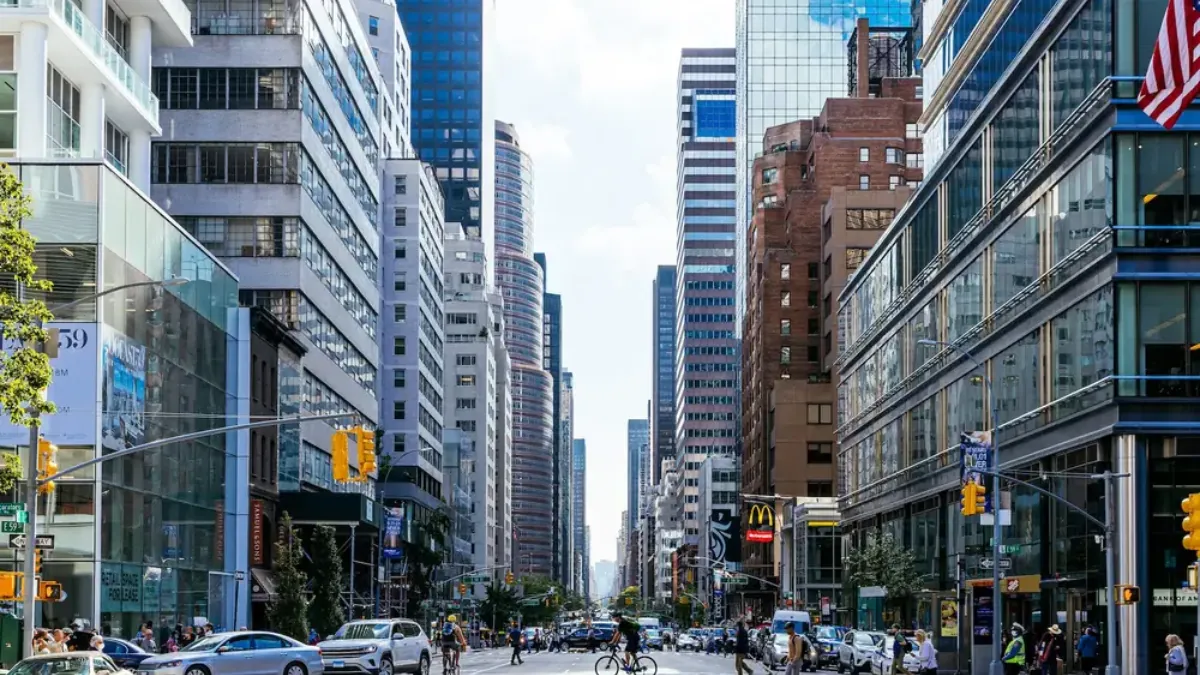New York, the vibrant and bustling metropolis that never sleeps, is home to many towns and cities offering diverse lifestyles. However, amidst the glitz and glamour, seven New York towns have seen a surprising exodus of residents.
From picturesque hamlets to bustling suburban enclaves, these once-thriving communities have been experiencing a mass departure of inhabitants looking to escape the hustle and bustle of city life. Whether it’s skyrocketing living costs, dwindling job opportunities, or simply seeking greener pastures elsewhere, these 7 New York towns have become hotbeds for those eager to pack their bags and leave as soon as possible.
New York Towns Facing Exodus: A Closer Look
| Town | County | Population Decline (2010-2019) | Key Factors Driving Exodus |
| Monticello | Sullivan | 9.4% | Poverty, crime, unemployment, lack of investment |
| Newburgh | Orange | 5.4% | Gang violence, drug trafficking, poverty, high crime rates |
| Ogdensburg | St. Lawrence | 8.3% | Decline in manufacturing, trade, and tourism, fiscal crisis |
| Salamanca | Cattaraugus | 7.6% | Dispute over casino revenues, budget issues, development challenges |
| Seneca Falls | Seneca | 6.5% | Loss of spotlight, fading relevance, lack of growth opportunities |
| Sherrill | Oneida | 6.1% | Factory closures, aging population, competition from larger cities |
| Watervliet | Albany | 5.9% | Environmental issues, urban decay, social problems, declining quality of life |
1. Monticello
Monticello, situated in the picturesque Catskills region of Sullivan County, was once a thriving tourist destination, particularly favored by Jewish vacationers. However, the town’s fortunes have dwindled over the years, leaving behind a trail of poverty, crime, unemployment, and a dearth of investment. Startling statistics from the US Census Bureau reveal that Monticello’s population has experienced a significant decline of 9.4% between 2010 and 2019, cementing its status as one of the fastest-shrinking towns in the state.
2. Newburgh
Newburgh, a town on the Hudson River in Orange County, boasts a vibrant history and a diverse culture. However, it has unfortunately gained notoriety as one of New York’s most dangerous places. Gang violence, drug trafficking, corruption, and poverty have plagued the town, leading to alarming rates of homicides, assaults, robberies, and shootings. The US Census Bureau reveals that from 2010 to 2019, Newburgh’s population experienced a decline of 5.4%, as residents sought safer and more prosperous surroundings.
3. Ogdensburg
Ogdensburg, a town in St. Lawrence County, is situated near the Canadian border. In the past, it flourished as a bustling hub for industry and commerce. However, the town has faced significant challenges due to the decline in manufacturing, trade, and tourism.
These hardships have led to a fiscal crisis, compelling Ogdensburg to make tough decisions such as cutting public services, increasing taxes, and laying off employees. The US Census Bureau reports that Ogdensburg’s population has decreased by 8.3% from 2010 to 2019, highlighting the lack of economic opportunities and incentives for residents to stay.
4. Salamanca
Salamanca, a town in Cattaraugus County, rests on the Allegheny Plateau and is the sole American city on the Allegany Indian Reservation of the Seneca Nation. Unfortunately, the town has been embroiled in a long-standing disagreement between the Seneca Nation and the state of New York regarding casino revenues.
This ongoing dispute has significantly impacted Salamanca’s budget and hindered its overall development. In fact, recent data from the US Census Bureau reveals that Salamanca has experienced a 7.6% decline in population from 2010 to 2019, reflecting a deep dissatisfaction with the town’s governance and future prospects.
5. Seneca Falls
Seneca Falls, situated in Seneca County within the picturesque Finger Lakes region, is the birthplace of the women’s rights movement. This historic town gained prominence for hosting the inaugural Women’s Rights Convention in 1848.
Despite its illustrious past, Seneca Falls has witnessed a decline in its allure and relevance over the years, losing its spotlight to neighbouring attractions and destinations. The latest data from the US Census Bureau reveals a noteworthy 6.5% decrease in the population of Seneca Falls from 2010 to 2019, indicating a waning interest in residing within this town.
6. Sherrill
Sherrill, a town in Oneida County situated in the Mohawk Valley, is the smallest city in New York in terms of population. Known as the “Silver City” due to its rich history in silverware manufacturing, Sherrill has faced numerous challenges in maintaining its identity and vibrancy.
The closure of factories, an aging population, and stiff competition from larger cities have all contributed to the town’s struggles. In fact, data from the US Census Bureau reveals a 6.1% population decline in Sherrill from 2010 to 2019, highlighting the town’s lack of appeal and limited growth prospects.
7. Watervliet
Watervliet, situated on the west bank of the Hudson River, is a town in Albany County. Once known as West Troy, it played a significant role in the iron and steel industry during the 19th and early 20th centuries.
However, the town has been grappling with environmental issues, urban decay, and social problems, leading to a decline in population, income, and overall quality of life. The US Census Bureau reports a 5.9% decrease in Watervliet’s population between 2010 and 2019, reflecting a general discontent with the town’s current conditions and future prospects.



